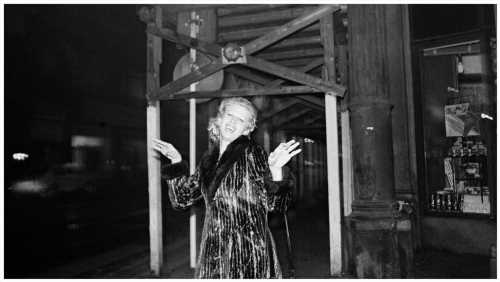Photographer Libuše Jarcovjáková – no stranger to Prague’s nightlife in the 1970s and 80s, as depicted in upcoming documentary “I’m Not Everything I Want to Be” – has already earned comparisons to a certain American icon.
“Libuše had this big exhibition in France in 2019 and on the radio they said: ‘She is like Nan Goldin of Czechoslovakia,’” says producer Lukáš Kokeš. Klára Tasovská directs.
Recently, Goldin has been the subject of Laura Poitras’ Oscar-nominated “All the Beauty and the Bloodshed.”
“The very first time we pitched this project, our tutor, ‘Navalny’s’ editor Maya Daisy Hawke, said: ‘That’s funny. My husband [Joe Bini] is actually editing a film about Goldin next door,’” laughs Kokeš.
“In order to be authentic, Goldin would go to live with sex workers or addicts. Libuše did the same thing. Her most unique series of photographs comes from this LGBTQ+ club in Prague. That’s when she discovered sexual relationships with women.”
“In an unfree regime, she sought islands of freedom: gay clubs, night shifts in factories, pubs, Vietnamese hostels. Places where people, from her point of view, lived without inhibitions. She wanted to belong to them and to feel alive,” adds Tasovská.

“The intimacy of these photographs stems from the fact that she photographed what she lived. Parties, sexual exploration, doubts and depression.”
Jarcovjáková’s unconventional take on communist Czechoslovakia, as well as Tasovská’s commitment to compose the film entirely out of her photos, impressed the jury at Karlovy Vary, resulting in the project receiving the Works in Progress Post-Production Development Award.
Somatic Films (Czech Republic), Nutprodukcia (Slovakia) and Mischief Films (Austria) are producing.
“There are no talking heads here, no experts,” says Kokeš.
“Klára had access to all the photos Libuše has ever taken and to the diaries she has been writing since she was 17. You can really look through her eyes and be inside of her head.”
“We almost forget we are looking at motionless photographs,” she adds.
“Still, I had no idea how challenging this whole process would be. Making a film from photos is just as complex and time-consuming as making an animation.”
Now in her 70s, Jarcovjáková entrusted the director with “complete freedom,” says Tasovská, allowing her to deliver a “highly universal and contemporary story of female emancipation.”
“Libuše refused to have children, to adapt to social norms. She has been living with a female partner for the last 30 years. It’s about finding your identity and finding freedom, but also about living according to your own ideas,” notes Kokeš.

“This conscious decision by a woman not to be a mother, not to want children, often evokes a peculiar astonishment. Even in a liberal society. But where does this notion even come from? Libuše speaks openly about these questions,” adds Tasovská.
Stressing that nothing was off the table when making the film, including the mentions of Jarcovjáková’s abortions, one of which almost cost her her life.
“These are universal themes that still hold relevance today. Especially when we look at the tendencies to encroach upon women’s rights in Poland or in the U.S.”
It’s one of the reasons why, despite its period setting, the team believes in the relatability and timeliness of their film.
“Libuše is a role model. Not only for me, but potentially for everyone,” says Tasovská.
“She is 71 years old now and yet she still hasn’t been properly discovered. It’s not unusual, as the history of photography has been dominated by men,” says Kokeš.
“We are talking about a local photographer, but we are also asking questions everyone can understand: How can you break through as a female artist in a male-dominated field? How do you accept your ‘otherness’? How do you develop a good relationship with your body, even though according to some ‘standards’ it’s not considered classically beautiful?”
He adds: “It was obvious to us that instead of it being some boring documentary, this film should have a timeless touch. After all, Libuše started taking selfies long before it was cool.”
Read More About:
Source: Read Full Article
